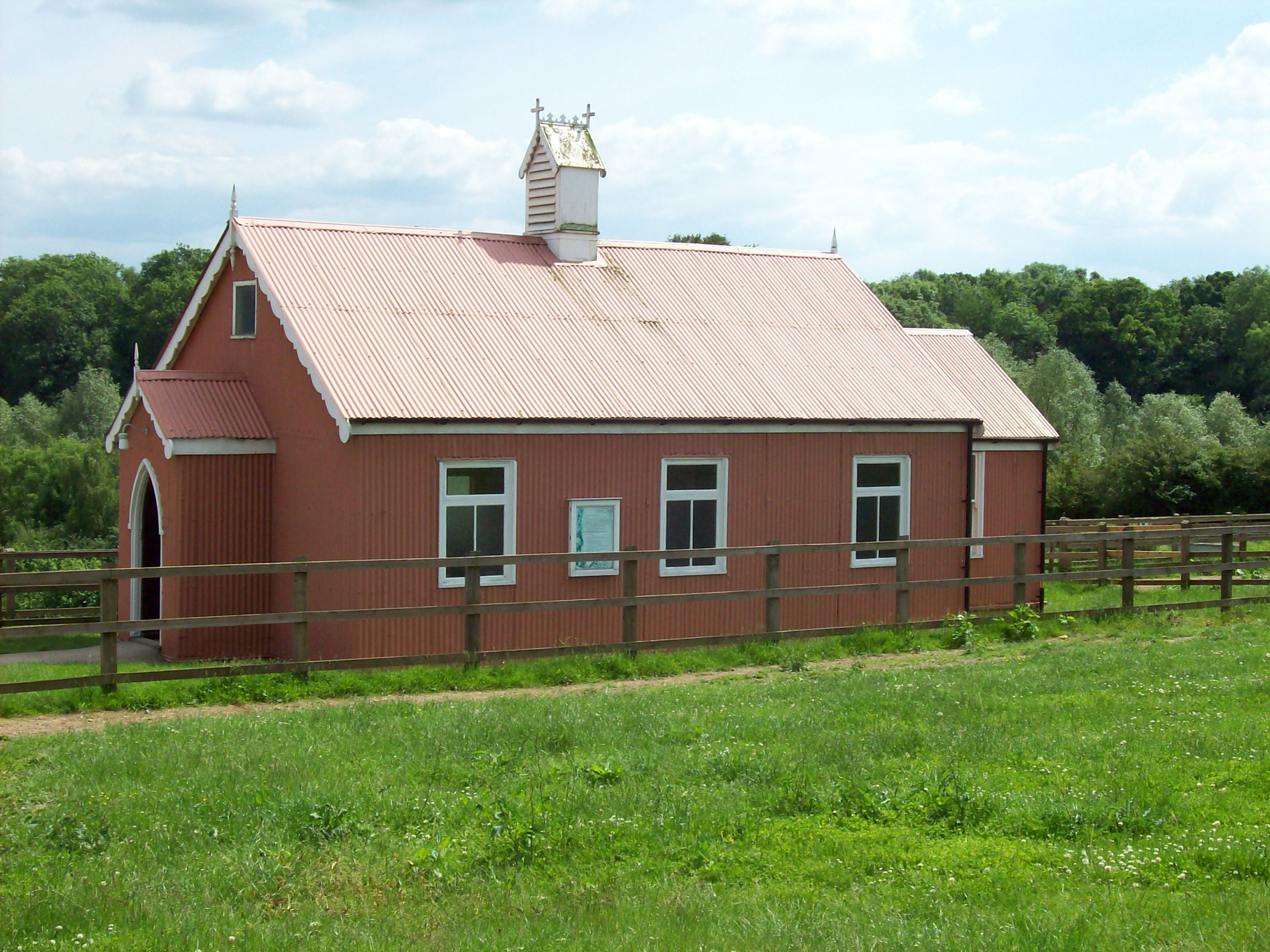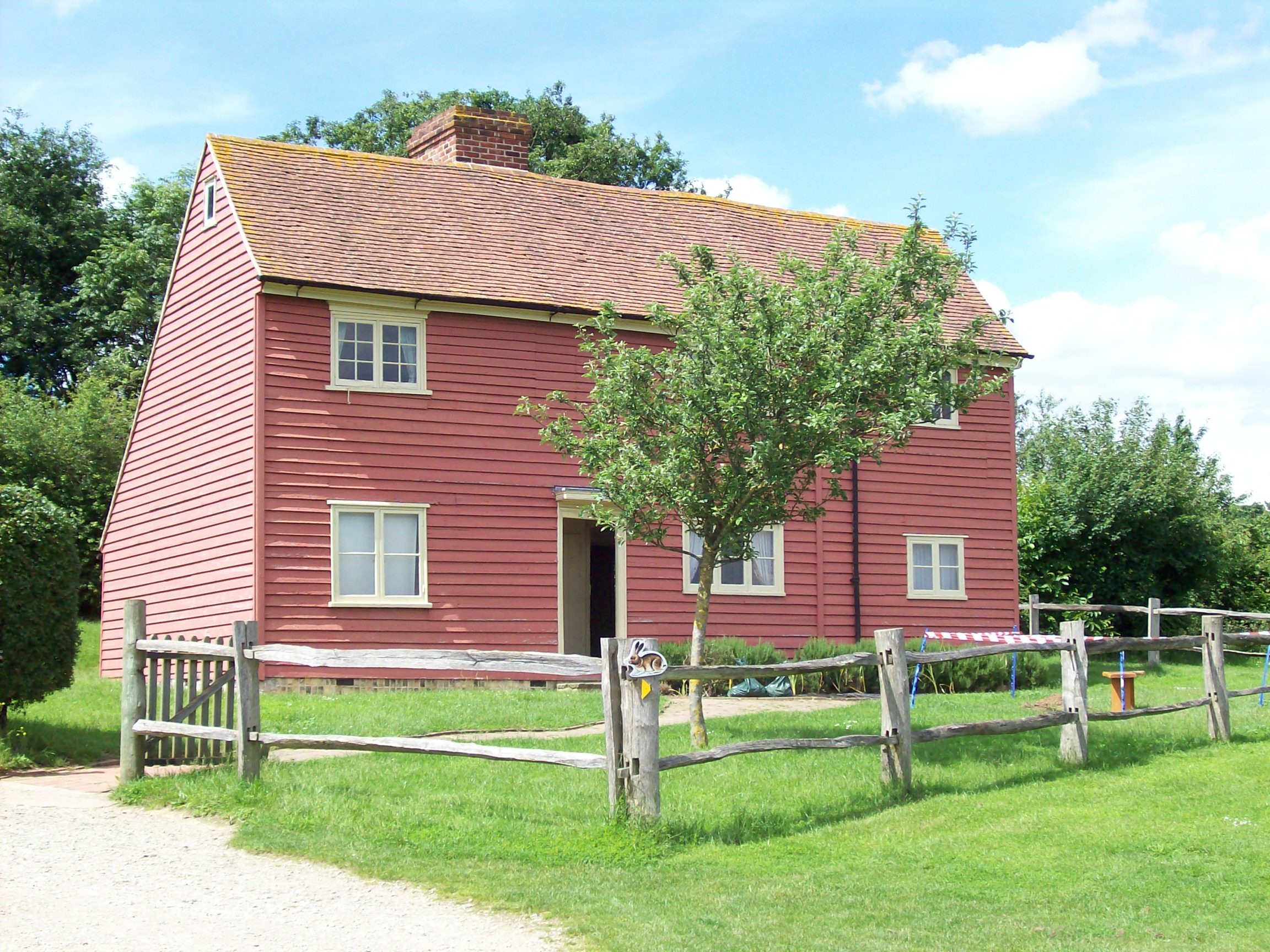Kent Life on:
[Wikipedia]
[Google]
[Amazon]
 Kent Life (formerly the Museum of Kent Life) is an English
Kent Life (formerly the Museum of Kent Life) is an English
/ref>
 A five bay barn dating from the eighteenth century and originally at Vale Farm, Calcott, near
A five bay barn dating from the eighteenth century and originally at Vale Farm, Calcott, near
/ref>
 The
The
/ref>
 Originally called ''Old Cottage'' and ''Water Street Cottage'', these cottages stood at
Originally called ''Old Cottage'' and ''Water Street Cottage'', these cottages stood at
/ref>
 A late-eighteenth-century farmhouse.Museum of Kent Life
A late-eighteenth-century farmhouse.Museum of Kent Life
/ref>
/ref> Petts Farmhouse is a Grade II* listed building.English Heritage
/ref>
 Sandling farmhouse is one of the original farm buildings. It was the home of George Brundle, the last tenant of the farm until his death at 98 in 2001. The building dates to the sixteenth century, and has links to Sir Thomas Wyatt.Museum of Kent Life
Sandling farmhouse is one of the original farm buildings. It was the home of George Brundle, the last tenant of the farm until his death at 98 in 2001. The building dates to the sixteenth century, and has links to Sir Thomas Wyatt.Museum of Kent Life
/ref>
/ref>
 A nineteenth-century
A nineteenth-century
/ref>
/ref> A set of hopper huts with a wood frame clad in
Image:Cobtree Hopper.JPG, The rebuilt hopper huts from Hadlow
Image:Cobtree Hopper2.JPG, The reconstructed hopper huts
Image:Cobtree cookhouse.JPG, The reconstructed cookhouse
Image:Cobtree privy.JPG, The privy
 One of the original farm buildings. The
One of the original farm buildings. The
/ref>
/ref>
/ref>
/ref>
 Of similar construction to the chapel. The old village hall from Ulcombe was donated to the museum in 1997. It was dismantled in October 1997 and re-erected, opening to the public in June 2000.Museum of Kent Life
Of similar construction to the chapel. The old village hall from Ulcombe was donated to the museum in 1997. It was dismantled in October 1997 and re-erected, opening to the public in June 2000.Museum of Kent Life
/ref>
 The wagon store building was purpose built at the museum in 1993. The re-created forge is at one end.Museum of Kent Life
The wagon store building was purpose built at the museum in 1993. The re-created forge is at one end.Museum of Kent Life
/ref>
Museum of Kent Life
homepage {{Maidstone Open-air museums in England Museums in the Borough of Maidstone Houses in Kent Rural history museums in England Local museums in Kent Farm museums in England Agricultural museums in England
 Kent Life (formerly the Museum of Kent Life) is an English
Kent Life (formerly the Museum of Kent Life) is an English open-air museum
An open-air museum (or open air museum) is a museum that exhibits collections of buildings and artifacts out-of-doors. It is also frequently known as a museum of buildings or a folk museum.
Definition
Open air is “the unconfined atmosphereâ ...
located at Sandling, next to Allington Locks, on the east bank of the River Medway.
History
SirGarrard Tyrwhitt-Drake __NOTOC__
Sir (Hugh) Garrard Tyrwhitt-Drake (22 May 1881 – 24 October 1964) was a businessman, zoo owner and author. Between 1915 and 1950, he was twelve times the Mayor of Maidstone, Kent and was High Sheriff of Kent in 1956–57.
Life
Tyrw ...
bequeathed the Cobtree Manor Estate to Maidstone Borough Council in 1966. A part of the estate was Sandling Farm, on the banks of the Medway. In 1984 a decision was made to restore the derelict farm as part of a rural life museum. The museum opened to the public on July 6, 1985.Kentish Oasts p159Museum of Kent Life/ref>
Farming
At the museum, various aspects of farming are recreated. There are two small hop gardens, growing Fuggles and Goldings hops. Apple and plum orchards, a herb garden, a soft fruit garden and various livestock.Buildings
The museum has a variety of buildings, most of which have been dismantled and re-erected at the museum.Barn
Sturry
Sturry is a village on the Great Stour river situated northeast of Canterbury in Kent. Its large civil parish incorporates several hamlets and, until April 2019, the former mining village of Hersden.
Geography
Sturry lies at the old Roman jun ...
. The barn has an oak
An oak is a tree or shrub in the genus ''Quercus'' (; Latin "oak tree") of the beech family, Fagaceae. There are approximately 500 extant species of oaks. The common name "oak" also appears in the names of species in related genera, notably ''L ...
frame and a thatch
Thatching is the craft of building a roof with dry vegetation such as straw, water reed, sedge (''Cladium mariscus''), rushes, heather, or palm branches, layering the vegetation so as to shed water away from the inner roof. Since the bulk of ...
ed roof. It was dismantled in 1984 and re-erected at the museum in 1989.Museum of Kent Life/ref>
Chapel
chapel
A chapel is a Christian place of prayer and worship that is usually relatively small. The term has several meanings. Firstly, smaller spaces inside a church that have their own altar are often called chapels; the Lady chapel is a common ty ...
is a timber-framed building clad in corrugated iron
Corrugated galvanised iron or steel, colloquially corrugated iron (near universal), wriggly tin (taken from UK military slang), pailing (in Caribbean English), corrugated sheet metal (in North America) and occasionally abbreviated CGI is a ...
(a tin tabernacle
A tin tabernacle, also known as an iron church, is a type of prefabricated ecclesiastical building made from corrugated galvanised iron. They were developed in the mid-19th century initially in the United Kingdom. Corrugated iron was first us ...
). It was originally built in 1897 in Cuxton
Cuxton is a village in the unitary authority of Medway in South East England. It lies on the left bank of the River Medway in the North Downs. It is served by the A228, and Cuxton railway station on the Medway Valley Line between Strood and Maid ...
and was donated to the museum in 2000 when a new chapel was built.Museum of Kent Life/ref>
Lenham Cottages
Lenham
Lenham is a market village and civil parish in Kent situated on the southern edge of the North Downs, east of Maidstone. The picturesque square in the village has two public houses (one of which is a hotel), a couple of restaurants, and a tea ...
. The Grade II listed building were threatened by the building of the Channel Tunnel rail link. The builder of the link offered the cottages to the museum, along with the funding for their removal and re-erection. They were dismantled in June 1999, and re-erected between January 2000 and March 2001, opening to the public in July 2001.Museum of Kent Life/ref>
Petts Farmhouse
/ref>
/ref> Petts Farmhouse is a Grade II* listed building.English Heritage
/ref>
Sandling Farmhouse
/ref>
Forge
Ablacksmith
A blacksmith is a metalsmith who creates objects primarily from wrought iron or steel, but sometimes from other metals, by forging the metal, using tools to hammer, bend, and cut (cf. tinsmith). Blacksmiths produce objects such as gates, gr ...
's forge has been recreated at the museum.Museum of Kent Life/ref>
Granary
granary
A granary is a storehouse or room in a barn for threshed grain or animal feed. Ancient or primitive granaries are most often made of pottery. Granaries are often built above the ground to keep the stored food away from mice and other animals ...
from Boxley Grange Farm, Boxley, was dismantled in March 1993 and has been re-erected at the museum.Museum of Kent Life/ref>
Hopper Huts
A set ofHopper hut
A hopper hut was a form of temporary accommodation provided for hops, hop-pickers on English farms in the 19th and 20th centuries.
Background
Before the days of mechanised farming, hop picking was a labour-intensive process, requiring a vastly g ...
s from North Frith Farm, Hadlow
Hadlow is a village in the borough of Tonbridge and Malling in Kent, England. It is situated in the Medway valley, north-east of Tonbridge and south-west of Maidstone.
The Saxon name for the settlement was Haeselholte (in the Textus Roffens ...
was dismantled and re-erected at the museum. These huts are built of brick, with internal fireplaces.Museum of Kent Life/ref> A set of hopper huts with a wood frame clad in
corrugated iron
Corrugated galvanised iron or steel, colloquially corrugated iron (near universal), wriggly tin (taken from UK military slang), pailing (in Caribbean English), corrugated sheet metal (in North America) and occasionally abbreviated CGI is a ...
has been constructed, along with a cookhouse and privy
Privy is an old-fashioned term for an outdoor toilet, often known as an outhouse and by many other names. Privy may also refer to:
* Privy council, a body that advises the head of state
* Privy mark, a small mark in the design of a coin
* Privy Pur ...
.
Oast
 One of the original farm buildings. The
One of the original farm buildings. The oast
An oast, oast house or hop kiln is a building designed for kilning (drying) hops as part of the brewing process. They can be found in most hop-growing (and former hop-growing) areas and are often good examples of vernacular architecture. Many ...
originally had four kilns, two round and two square. Hops had last been dried here some time before 1925. The two square kilns were demolished in 1935 and the stowage was damaged in a fire in 1951. The oast was restored in 1984, both round kilns and one square kiln being restored with cowls
A cowl is an item of clothing consisting of a long, hooded garment with wide sleeves, often worn by monks.
Originally it may have referred simply to the hooded portion of a cloak. In contemporary usage, however, it is distinguished from a clo ...
. The oast houses a reconstruction of a village store, being the interior fittings of a general store in Hawkhurst
Hawkhurst is village and civil parish in the borough of Tunbridge Wells in Kent, England. The village is located close to the border with East Sussex, around south-east of Royal Tunbridge Wells and within the High Weald Area of Outstanding Na ...
.Museum of Kent Life/ref>
Shepherd's Hut
A shepherd's hut from Acton Farm, Charing was presented to the museum in 1994.Museum of Kent Life/ref>
Tack Room
A tack room has been recreated at the museum.Museum of Kent Life/ref>
Tearooms
The tearooms are housed in one of the original farm houses.Museum of Kent Life/ref>
Village Hall
/ref>
Wagon Store
/ref>
References
Sources
*External links
Museum of Kent Life
homepage {{Maidstone Open-air museums in England Museums in the Borough of Maidstone Houses in Kent Rural history museums in England Local museums in Kent Farm museums in England Agricultural museums in England